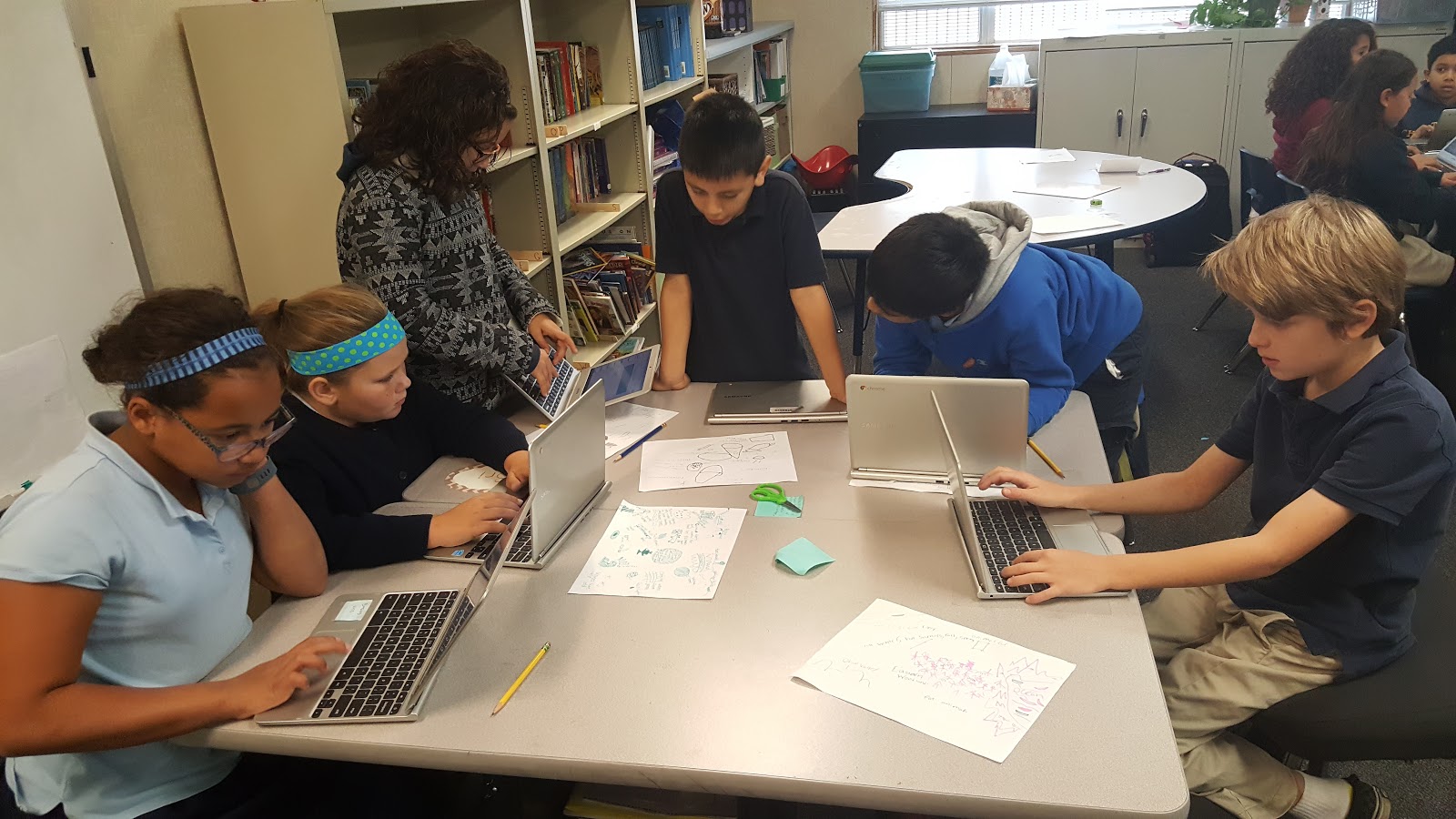The Power of Sketchnoting is Real-Brief Version
(This is the shortened version of this post. Once I started processing, the extended version came out a bit long! If you want to know ALL the details, it’s here for you.)
People have been buzzing about sketchnoting for a while now. I have dabbled with it, tried it out briefly in my classroom, and attended conference sessions about it. The ideas were brewing.
Based on a couple of collaboration sessions with my team and other colleagues, a unit came together where sketchnoting was key.
Here’s the sequence of lessons that became a series of powerful learning events.
Prep: Use Voice Recorder app on cell phone to record content from Social Studies text. Do one recording for each region to be studied and upload those to Google Drive. I gave them access to the files via links on a Google doc.
Essential Question: How did Geography, Climate, and Water affect the lives of Native Americans?
Their task: Learn about and understand the following components for your region of the United States. Be able to use your sketchnote to teach others in a jigsaw style. Be able to answer the essential question with specific examples.
Step 1: (15 min) Assign students to one region of the United States and discuss.
Step 2: (10 min) Model the process of sketchnoting for them. I played the audio file that I had recorded for the CA region over the sound system, and sketchnoted on the doc cam. I did a think-aloud while I paused and replayed parts of the recording to model that process for them.
Step 3: (20 min) Have them listen to their region’s recording on their Chromebooks with headphones and begin sketchnoting. They could pause and repeat as needed.
(A finished product)
Step 4: (10 min) Have them read the same information in the curriculum and add to their sketchnote. 
Step 5: (20 min) Put together groups of students that had the same region. They would compare sketchnotes and add even more to their own, based on the ideas from others. 
Here are two sketchnotes from the same region (Southwest):
Step 6: (60 min) Split the class up into four groups so that there is one person from each cultural region.
The person who was sharing had 2 minutes to speak. Everyone else gathered around the table so they could hear and had the notepage on their Chromebook open. They could either type while the person was sharing, or just listen and then type when the speaker was done.
(A student’s notepage on the Southwest Region)
No one else was allowed to speak during this time. After the 2 min. was up, the group members could ask questions. This process was repeated for the other 5 regions as well. (We split this section up into two 30 min blocks.)
Step 7: Ask students to answer the essential question in writing. They could use their sketchnotes and note page to pull ideas from.
Takeaways:
- I was struck by how much each person had to share. Way more than if they had just read and taken notes.
- The students didn’t fuss about having perfect art because they had an academic purpose to organize information. The art wasn’t the focus.
- The engagement factor was high.
- Classroom management was hardly needed.
- I can see their thinking on a sketchnote in a way I can’t through writing. It was powerful for me to see.
Grading: I graded their sketchnotes for informational reading, their speaking and listening skills during the group sharing based on my obervations and their digital notes, and asked them to answer the essential question on a Google form for Social Studies content knowledge.
Feedback: I asked students for some feedback on the process. 1 was the lowest score and 5 was the highest.
Would I do this again? You bet!